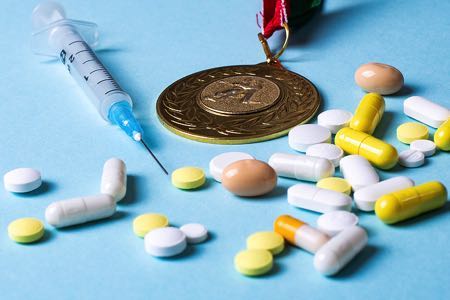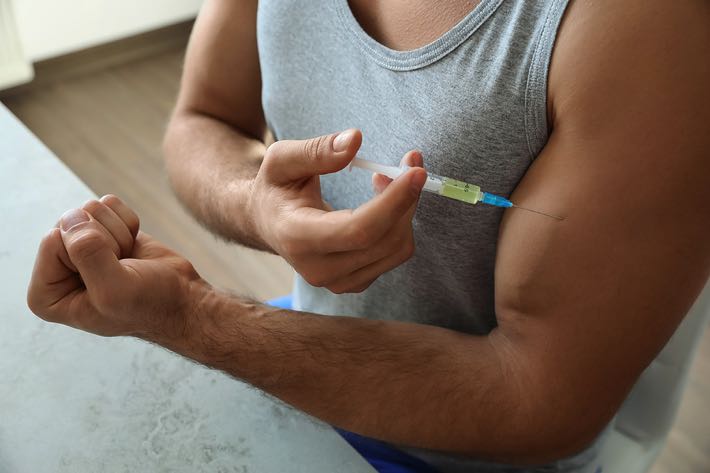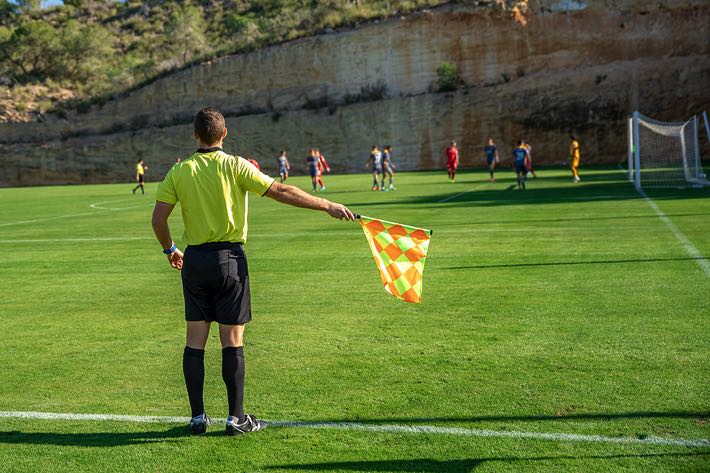 When it comes to sporting events, everyone thinks that there is always a level playing field. The entire notion of fairness in sports is based on that being the case, but the truth is that only the most naive of people would believe that the playing field truly is level. There is all sorts of cheating taking place in numerous different sports, from financial doping in football through to deflating the ball in rugby, there is barely a professional sport on the planet in which participants don’t cheat. The obvious question therefore becomes about how they do it and what systems are in place to detect it.
When it comes to sporting events, everyone thinks that there is always a level playing field. The entire notion of fairness in sports is based on that being the case, but the truth is that only the most naive of people would believe that the playing field truly is level. There is all sorts of cheating taking place in numerous different sports, from financial doping in football through to deflating the ball in rugby, there is barely a professional sport on the planet in which participants don’t cheat. The obvious question therefore becomes about how they do it and what systems are in place to detect it.
The ‘how’ is different from sport to sport, even if there are some links to specific types of cheating. Lance Armstrong is one of the most famous sporting cheats on the planet, for example, thanks to the years that he used performance enhancing drugs. Other athletes have also used PEDs to help them achieve their dream in the past, but drugs aren’t the only method of cheating. In many ways, it is a topic that is fair too big to explain in depth, but we can certainly have a look at some different examples of cheats and the methods there are to stop them from getting away with it.
What Is Cheating?
The most obvious place to start is by having a look at what it is that we mean when we talk about cheating. In essence, it is the intentional breaking of the rules of a specific sport in order to gain an advantage. There are obviously different rules in place for every sport and, in fact, every aspect of those sports. Performance Enhancing Drugs are the most obvious example of a way of cheating, given that they can allow an athlete or even a team to out-perform their normal level in order to be better than their opponents during play.
PEDs are an obvious form of cheating, but they aren’t the only one. In some sports, there is the ability to alter the equipment that is used in order to make things easier for one player or team or harder for the opposition. Alternatives to messing with the equipment can include bribery of officials or even opposition team members. One of the most difficult forms of cheating to identify is that of assisting gamblers by committing an action that a bet can be placed on at a specific time in order to allow them to place a winning wager on it.
How People Cheat & What Is Done to Stop It
As you can imagine, cheating can take many different forms. There is no one clear way of cheating that everyone who cheats engages with, else it would be easy enough for the authorities to spot it and stop it from happening. Instead, cheating takes countless forms, making it all but impossible for all types of cheating to be stopped at source. That doesn’t mean that we can’t talk about the most obvious forms of cheating, however. Drawing attention to cheating is the best way to stop it from happening on a regular basis.
Performance Enhancing Drugs

In the majority of sports, those taking part are asked to push their bodies to the limit. In cycling, for example, riders are asked to cycle for hundreds of miles as quickly as possible, requiring extraordinary feats of physical endurance. In order to cope with that, some athletes engage in what is known as ‘doping’, which is when banned substances are used in order to improve the athlete’s performance. The exact drugs that are used will differ from sport to sport, depending on what it is that the athlete is hoping to achieve in their sport.
There are, of course, some drugs that might help a player or a team improve that they legitimately need to take. Most sports offer the opportunity to apply for a TUE, which stands for Therapeutic Use Exemption. Unless a TUE has been issued, using a drug that would give you an advantage over an opponent is definitely against the rules of the majority of sports. If you performance is being enhanced in a way that comes from something other than just training harder or having better tactics, it is usually against the rules and considered to be cheating.
How It’s Stopped
It goes without saying that there are almost too many drugs that would enhance someone’s performance for the authorities to know how to stop it from happening. That, of course, doesn’t mean that they should just abandon all hope and allow athletes to get away with whatever the want to. Instead, the authorities work hard to do whatever they can to improve their methods of stopping drug cheats. Players and athletes are subjected to regular drugs tests, including ones carried out at random to make sure that they haven’t taken anything that they shouldn’t have.
The exact organisation that carries out the drugs testing varies depending on the sport. The World Anti-Doping Agency, known as WADA, is the biggest such body that carries out drugs testing, but it isn’t the only one. Most governing bodies for sports have their own drug-testing facilities, which are used in order to ensure that the players are all on a level playing field where possible. That doesn’t mean that some athletes won’t be naturally better than others, but it is the word ‘naturally’ that is key, meaning without drug-fuelled enhancements.
Prohibited Actions by Players

If you were to ask an English person of a certain age about cheating in sport, they would almost certainly tell you about the semi-final of the World Cup in 1986, when Diego Maradona used his hand to get the ball past the on-rushing England goalkeeper, Peter Shilton. Ask an Irish person, meanwhile, and they will point to when Thierry Henry used his hand to keep the ball in play in 2009, leading to France’s defeat of the Republic of Ireland in their World Cup qualifying campaign.
There are numerous such examples of actions by players that are prohibited by the rules of the game but that are carried out on a regular basis. Unfortunately, some of these continue regardless of the fact that they are against the rules. A football player who dives to win a penalty, for example, is definitely cheating. A tennis player who claims that a ball has gone out of play would also be thought of as cheating. Pick a sport and you would doubtless be able to think of an example of how a player has cheated when playing it.
How It’s Stopped
Such was the level of cheating from Thierry Henry in the World Cup qualifier that many people cite it as a reason to bring in the Video Assistant Referee system that is used in football nowadays. Technology is the best way to break the habits of cheaters, given that they can’t get away with it if it is caught on camera. In tennis, for example, the Hawk-Eye system confirms whether a ball is in or out of play in a matter of seconds. In football, VAR can allow officials to view an incident back to see whether a player has cheated in order to gain an advantage.
Whilst the use of officials is the best way of spotting infractions of the rules by players in real-time, often sports move too quickly or actions are too subtle in order for cheating to be noticed. As a result, the use of technology gives officials an easy set of helping hands to figure out whether something has taken place that shouldn’t have. Of course, even technology isn’t flawless. Players can still cheat so successfully that even a video replay doesn’t show it to be definitive, meaning that some or all of the ‘cheaters’ get away with it.
Altering Playing Equipment
 If a sport involves the use of specific equipment, such as golf clubs or a cricket ball, there is room for the players to alter the equipment in some way in order to either benefit themselves or else to inhibit the opposition. In American football, a player called Jerry Rice, who was admitted into the sport’s Hall of Fame, admitted to using an illegal substance called ‘stickum’, which ensured that the ball stuck to his gloves more solidly when he received a catch. That is obviously a form of cheating that has to be clamped down on.
If a sport involves the use of specific equipment, such as golf clubs or a cricket ball, there is room for the players to alter the equipment in some way in order to either benefit themselves or else to inhibit the opposition. In American football, a player called Jerry Rice, who was admitted into the sport’s Hall of Fame, admitted to using an illegal substance called ‘stickum’, which ensured that the ball stuck to his gloves more solidly when he received a catch. That is obviously a form of cheating that has to be clamped down on.
In cricket, there have been a number of examples of players doing something to the ball in order to get it to behave in a way that it shouldn’t. This means that it is likely that their team has gained an advantage that it wouldn’t otherwise have had. There are numerous such examples across different sports, with the main theme being that it allowed the player or the team to do something that they wouldn’t have been able to do had they not changed the equipment in some way, shape or form that gave them an advantage or impeded their opponent.
How It’s Stopped
There are regular checks carried out on equipment in all sports. In the world of horse racing, for example, jockeys need to be weighed-out and weighed-in to ensure that there isn’t an advantage being gained by them due to the weight that the horse is carrying. Similarly, boxers are weighed ahead of fights and have the likes of their gloves checked before a fight. Technology is also used in order to identify whether or not something suspicious seems to be taking place during a match or a game involving the equipment.
That isn’t to say that such things are completely eradicated from sports, of course. The reality is that tampering with equipment is an extremely difficult thing for the authorities to put a stop to. They can carry out as many checks as they want, but if a player is able to find a way to give themselves an advantage then checks will only do so much to identify it. The various sporting bodies therefore also rely on the likes of fellow professionals calling it out if they know that it is taking place, alerting to the governing bodies that it is happening.
Financial Cheating

Arguably the most difficult form of cheating to spot in professional sports is that of financial cheating. This can take more than one form, but when money is involved in order to alter the outcome that would happen without the money, it is designated to be cheating. An example would be a boxer who is paid money in order to be ‘knocked out’ in a specific round. Another would be a sports team bribing officials to give them favourable decisions that they wouldn’t get going their way if the official in question had been honest.
A different form of financial cheating is that of the financial doping that we have witnessed occurring in football more commonly nowadays. A team with a rich owner, usually a nation state, gets an artificially inflated sponsorship deal in order to ensure that more money enters their accounts than they would get from a legitimate sponsorship deal, with that money then being used to improve the playing squad compared to rivals. It is cheating, regardless of how much the offending team might wish to protest its innocence.
How It’s Stopped
Stopping financial cheating is extremely difficult. The reality is that the governing bodies need people to report on others receiving financial inducements in the majority of cases, should they wish to get it stopped. Similarly, financial doping is extremely difficult to have stopped, given the fact that the clubs and people carrying it out are very good at what they do. They also tend to be rather litigious, hence the reason it is often not called out in the press and there seems to be little attention gained by the topic in general.
That doesn’t mean that nothing is done, of course. The main way of stopping such things from taking place is by having severe punishments in place for those that commit that sort of financial cheating. There are systems put in place that mean that players or officials caught to be receiving any sort of financial inducement will lose their jobs and perhaps even face prison time. Teams that cheat with money will usually have any titles or trophies won from them stripped, sometimes awarded to the runners-up instead.